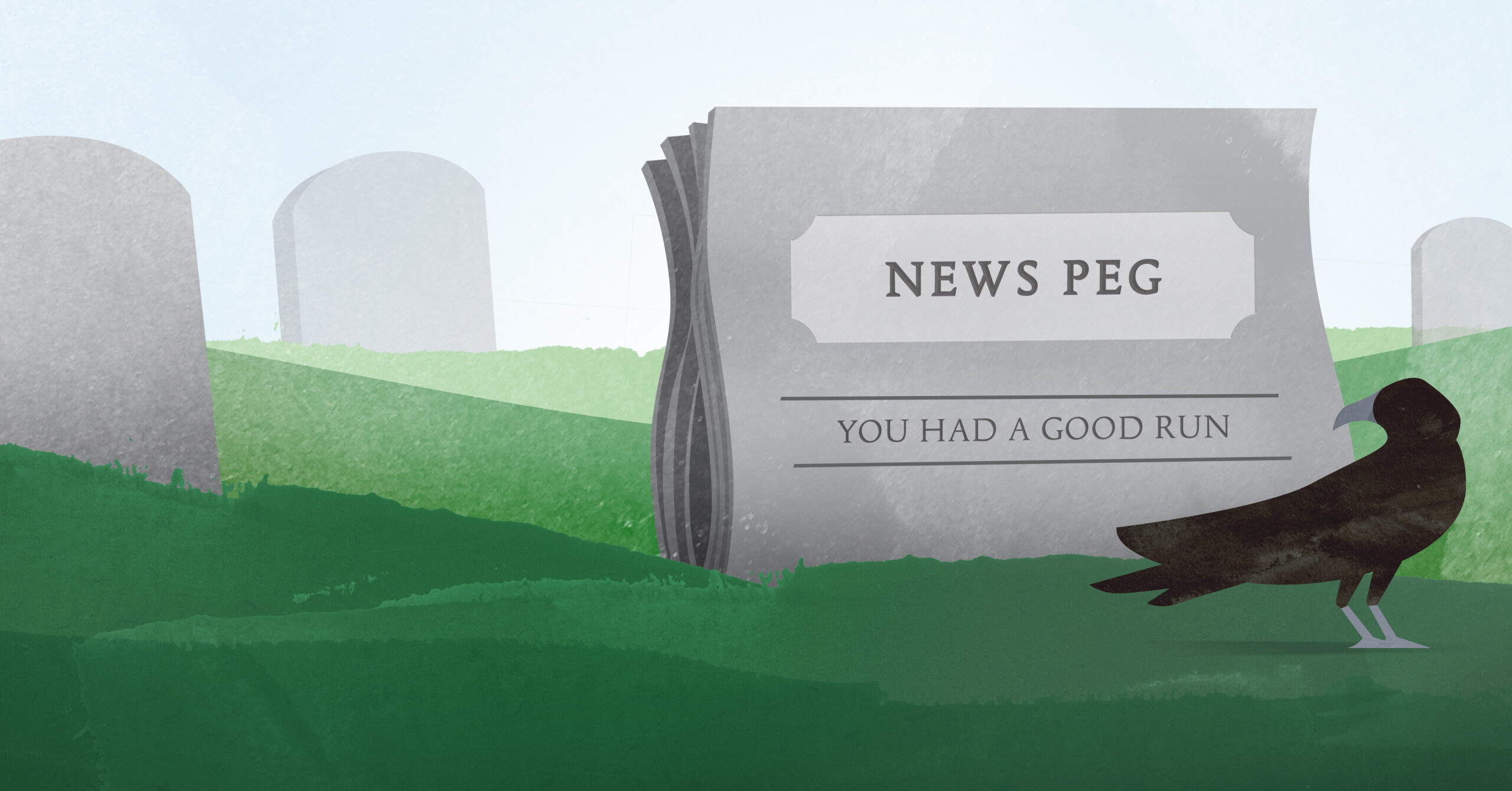Bidding a fond farewell to a newsroom nuisance
They were easy to spot. The bad ones were as obvious as the string of cans trailing a newlyweds’ limousine. I’m talking about news pegs tacked on to an otherwise compelling op-ed column.
When I ran USA Today’s op-ed pages for the better part of a decade, the submissions would pour in over the transom, and my deputy and I would spend a good bit of our time seeing which pieces were ready for prime time.
We’d look for the things you’d expect:
- A sharp insight
- A unique perspective
- Expertise on the subject
- Strong writing
- A persuasive approach
- A good news peg
The last of these, though — the news peg — always rubbed me the wrong way. I’m now the SVP of Content for a communications firm, but even before I left journalism, something felt “off” about the knee-jerk demand for a news peg. Even while I was in the op-ed chair, I was less wedded to the idea that every piece needed a news peg, but in my newsroom I was an outlier.
Now that I’ve worked on both sides of the op-ed aisle, it’s clear to me why my aversion to news pegs has swelled: It’s a relic of the pre-Internet age, when very limited space (in print) required editors to be incredibly selective about the submissions. The news peg was an easy way of thinning the herd.
TIMELINESS MATTERS, BUT …
This is not to say that in-the-moment pieces shouldn’t be the driving force for any good national opinion section. I believe they should be. Timely analysis and sharply directed opinion help to shape our public dialogue on the critical in-the-news issues of the day. But at a time when readers have infinite news sources and can consume their news (and opinion) whenever they’d like it — no one needs to wait for the paper delivery, after all — it seems that it’s long past time for the rules and norms to change to allow for more pieces untethered to the news of the day.
When I took over the op-ed page in 2004, we would typically have two column slots a day. That’s it. Digital was still a distant consideration (though in hindsight it shouldn’t have been!). One of the columns was most likely authored by a writer on my Board of Contributors; the other was sometimes an unsolicited submission.
But the math for outside submissions actually got worse. We’d receive submissions from Capitol Hill, corporate America, non-profits and foundations, authors and … you get the picture. That’s not even accounting for the everyday reader who had something incisive to say but couldn’t cram it into a 250-word letter.
So the news peg became the driver of all that we did.
Many of you reading this will know what was happening outside of my sight as a result of this “policy,” of sorts. Smart people like you were sitting on good columns that would have no doubt served the readers in that moment, but you were looking for — waiting for — the right peg. It’s a dance I do today in helping some clients land their pieces.
I’m ready to retire the dancing shoes.
THAT ‘RECENT STUDY’
In the Internet age, when a news organization has no limit on the number of pieces published, the news peg has become a stubborn and outdated relic of another age. Readers today are smart enough and savvy enough to understand that if an op-ed writer speaks to, say, the obesity epidemic, that the piece does not need a “recent study” to make the expert’s insights on the issue relevant or important. A supplementary and timely study is useful, but it shouldn’t be essential.
If a writer with great depth of knowledge on the intersection of terrorism and religion has a piece worthy of The New York Times or The Washington Post, do the insights explored in the op-ed get sharper, or does the urgency of the argument become more so, because a hearing on Capitol Hill will explore terrorism? Readers would likely find these news peg-less pieces outside the confines of any news organization’s website anyway.
The only constant in newsrooms today is change, and the already-overworked editors of the nation’s most august publications barely have time for lunch, let alone to debate the merits of a news peg. But if this requirement does one day go the way of hot type and well-staffed copy desks, I’m standing by to write its obit.
John Siniff is SVP of Content at Subject Matter, a communications firm in Washington, D.C. He ran USA Today’s op-ed page, and was on the paper’s Editorial Board, from 2004-2012.




